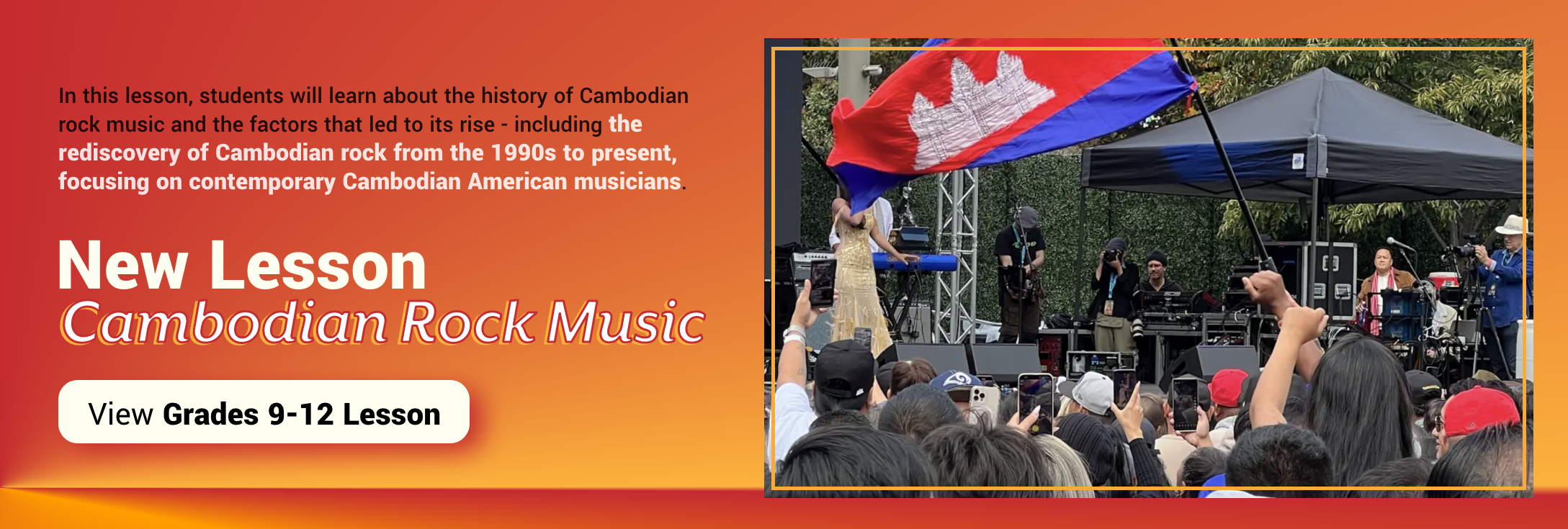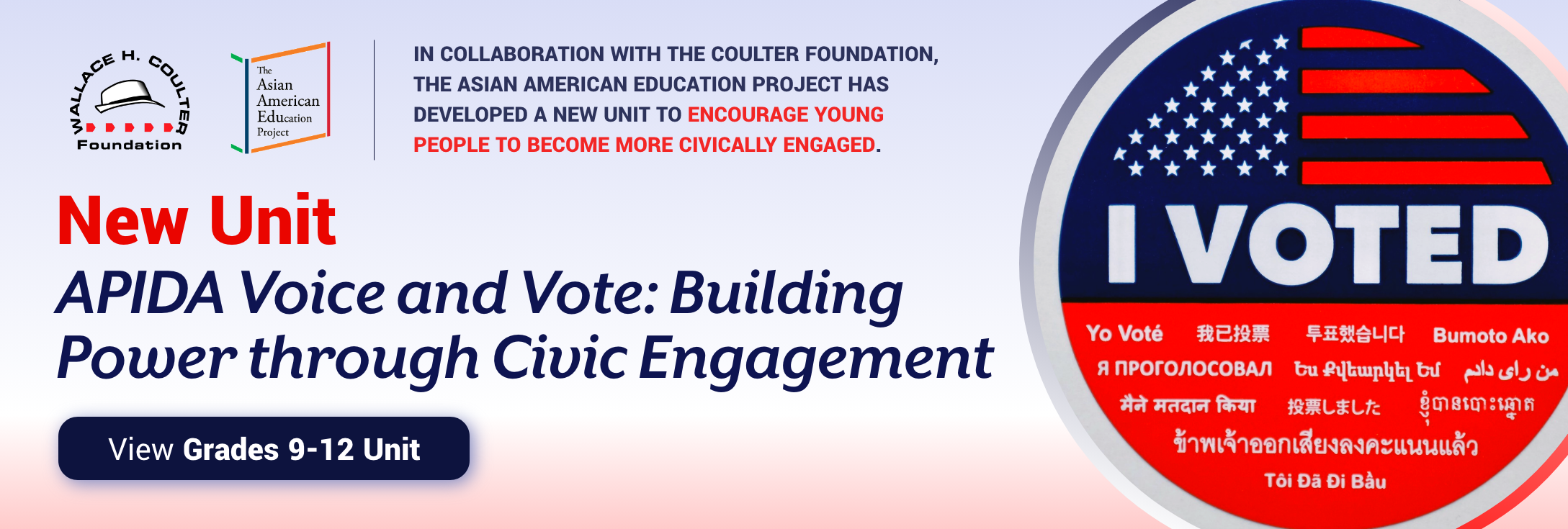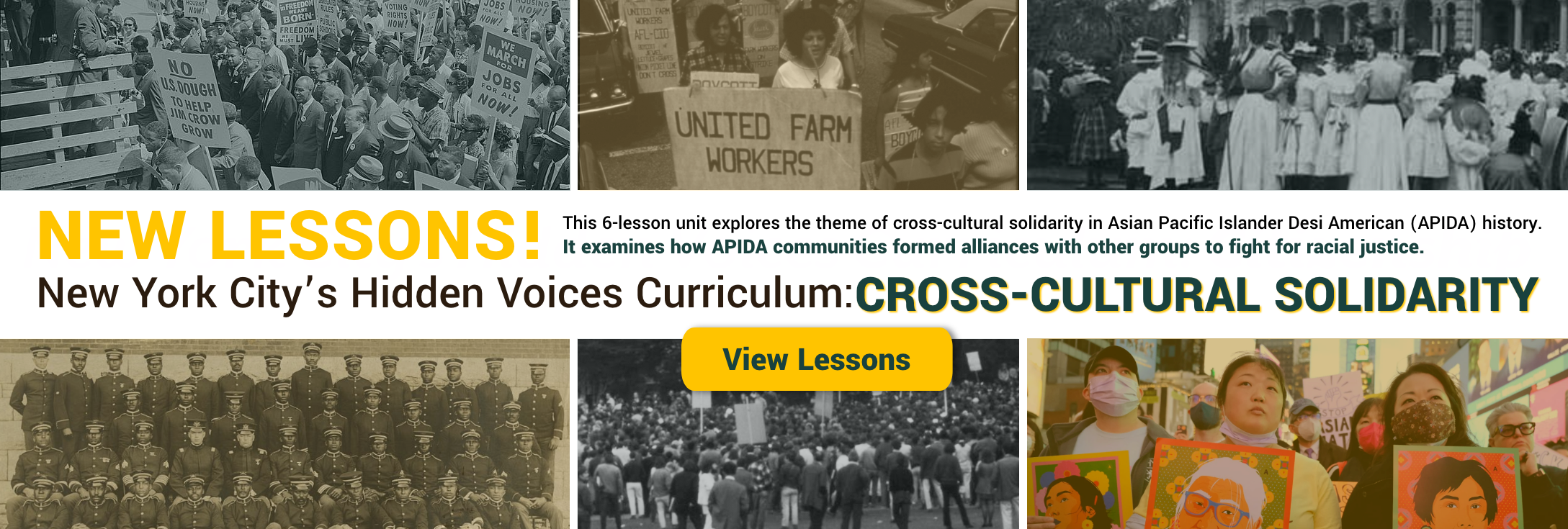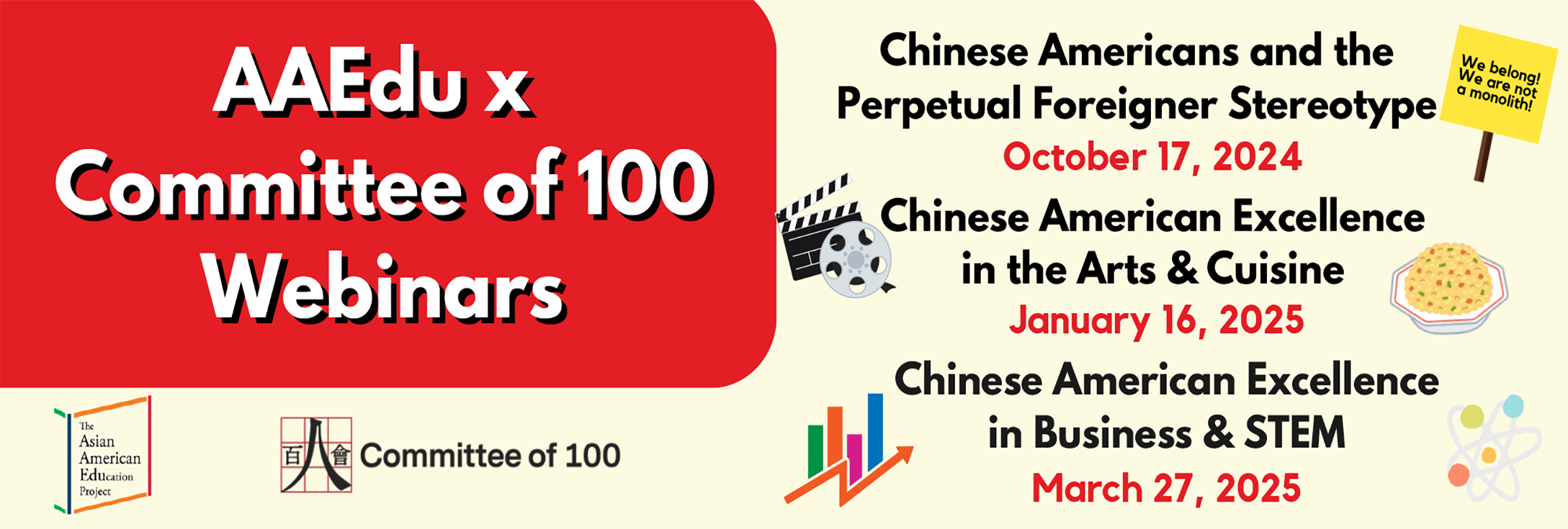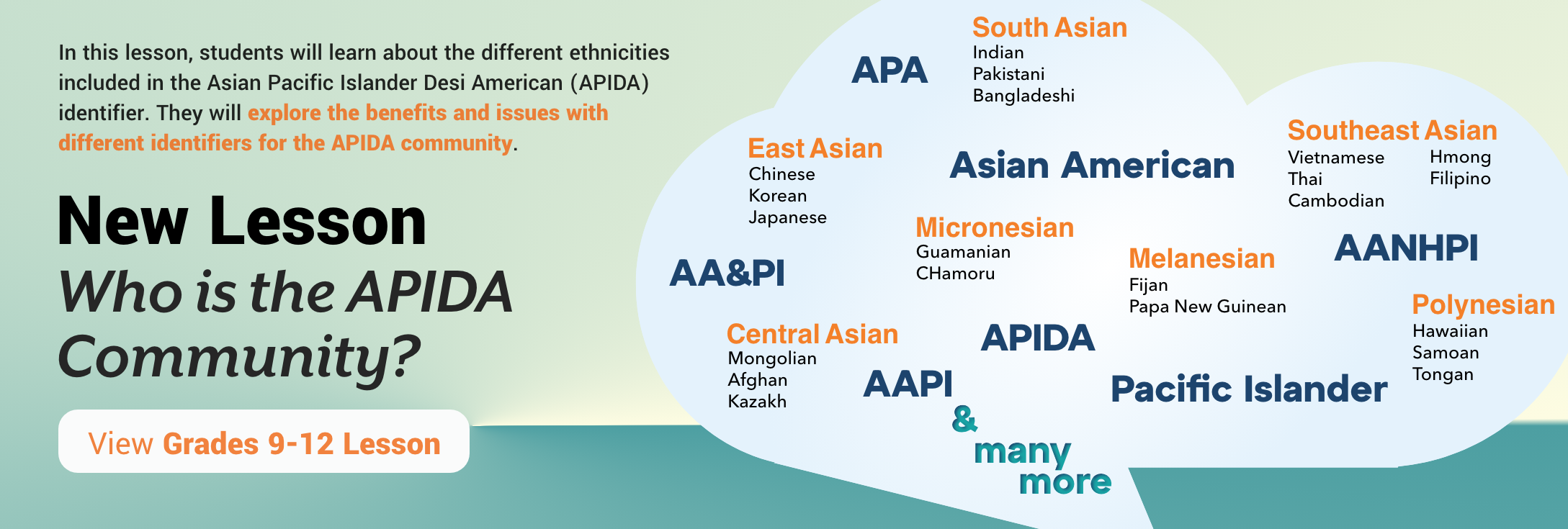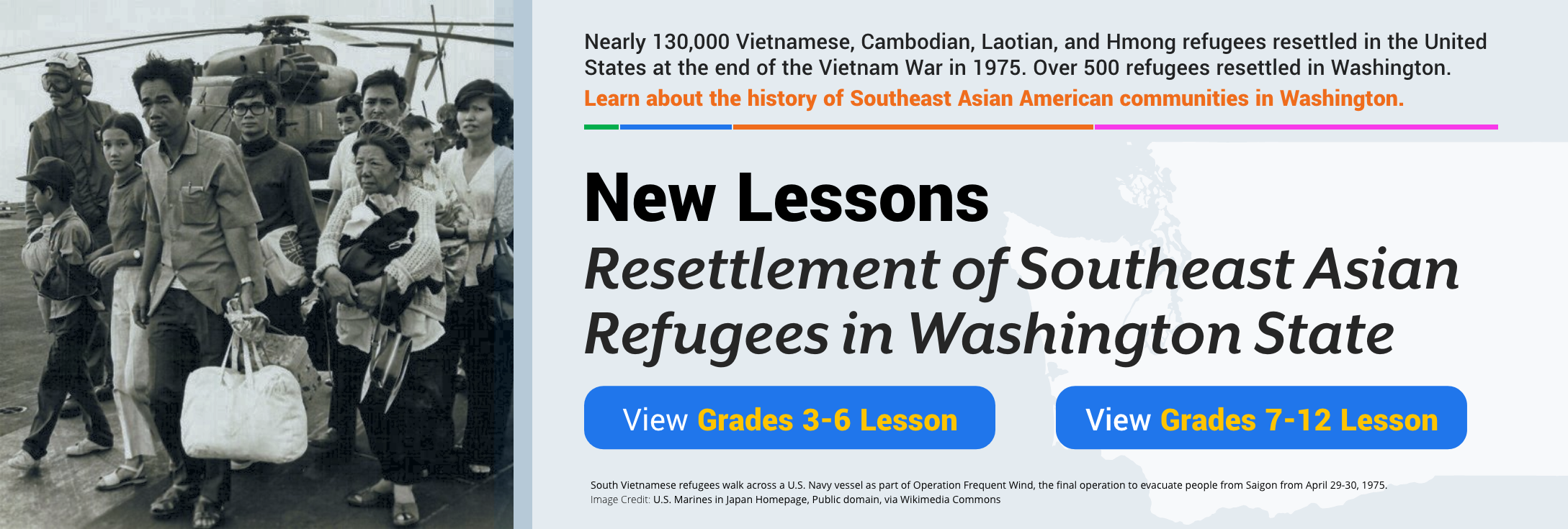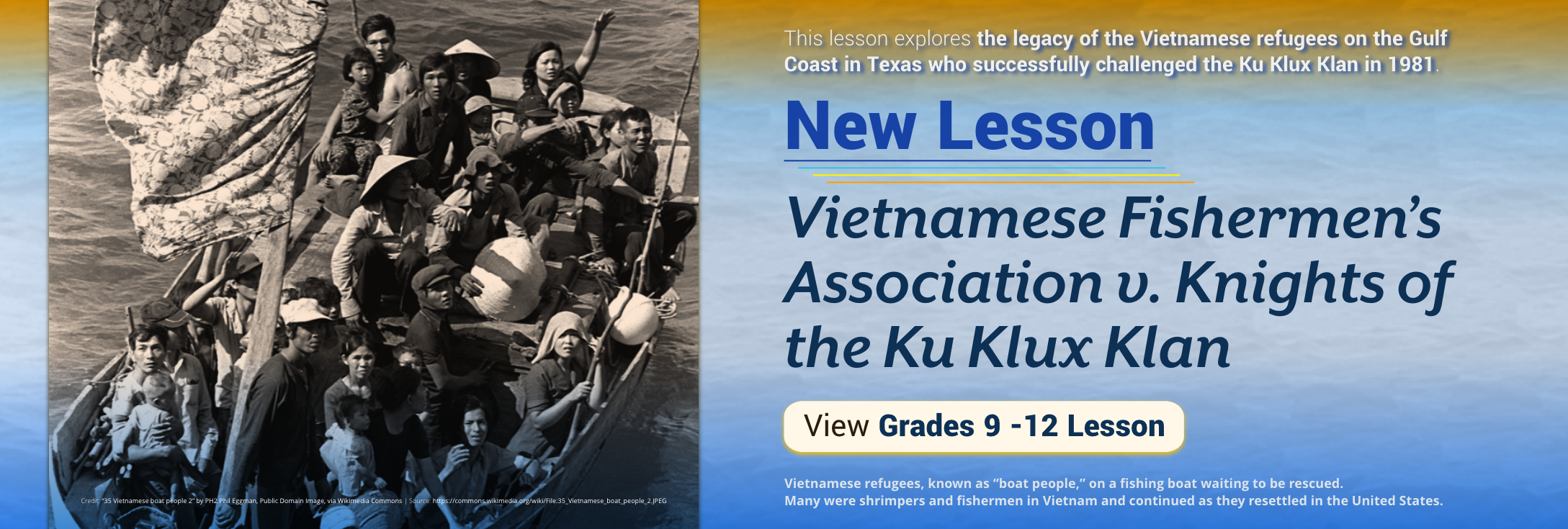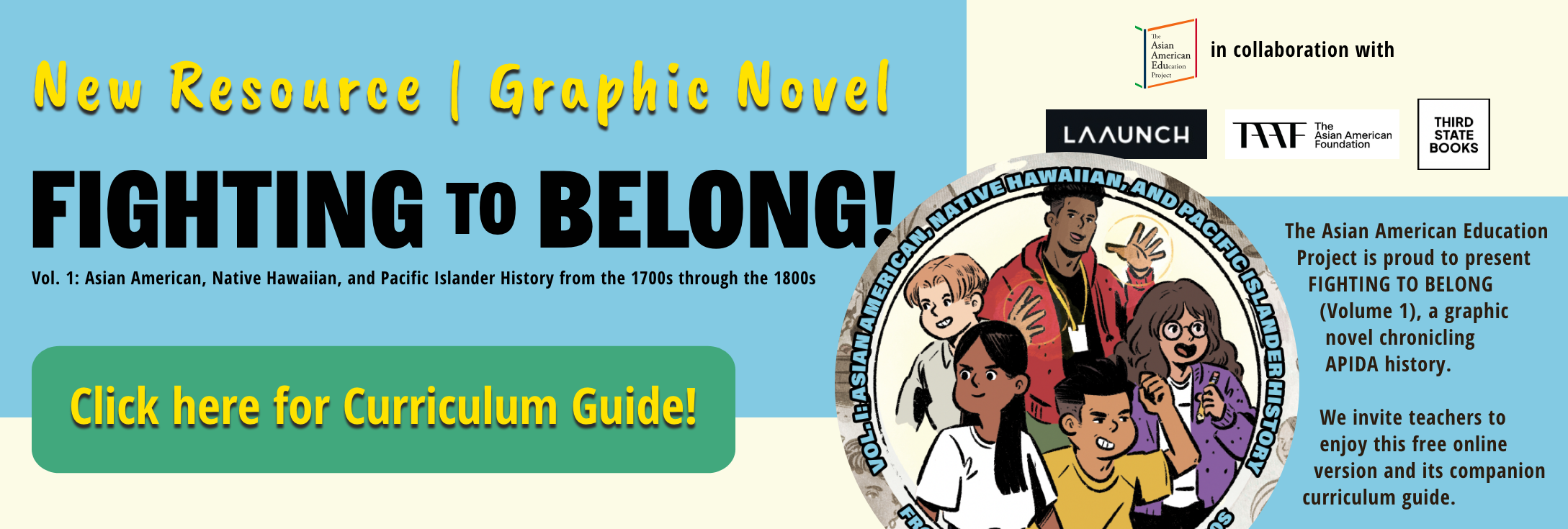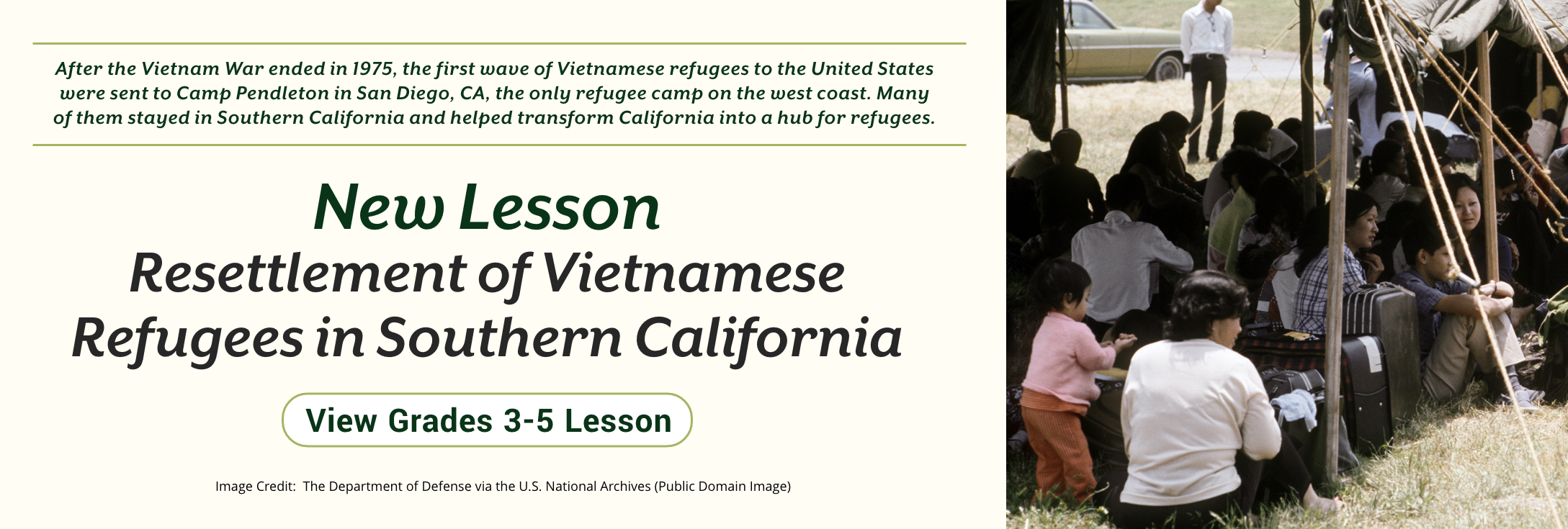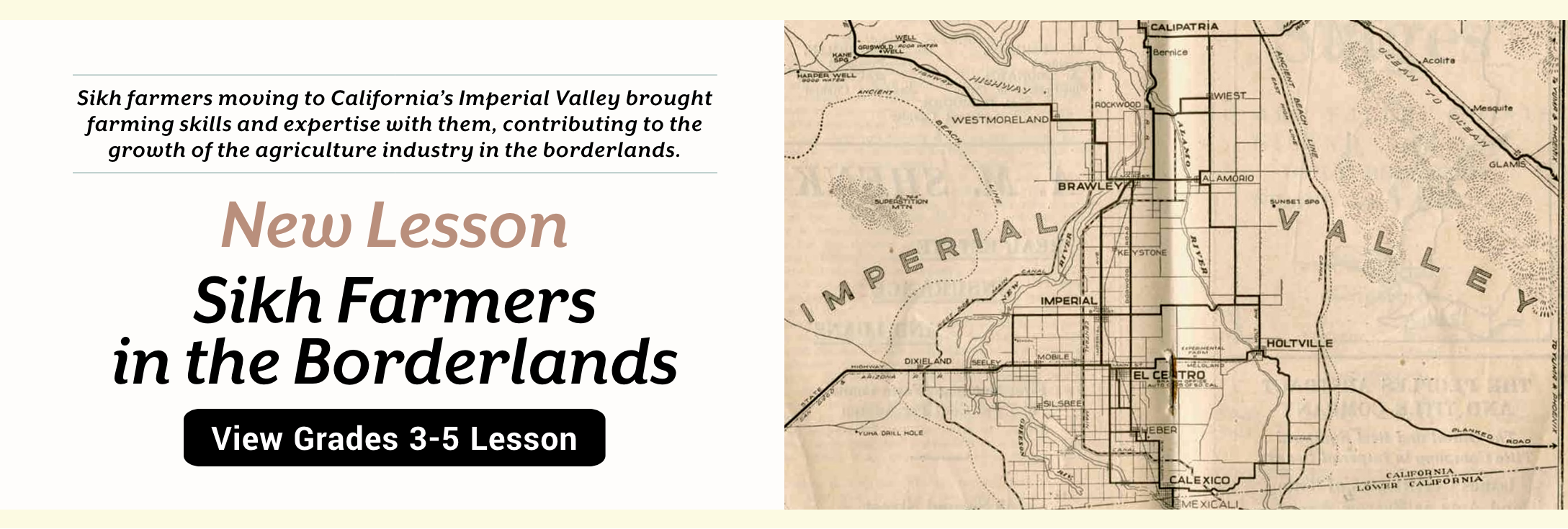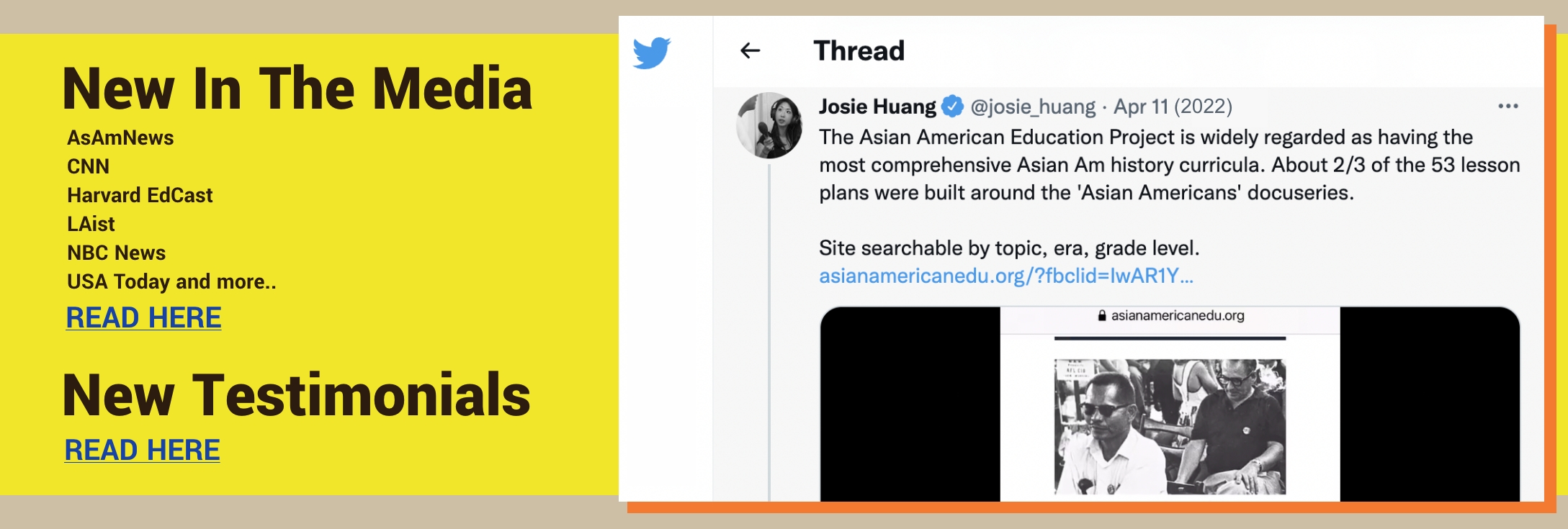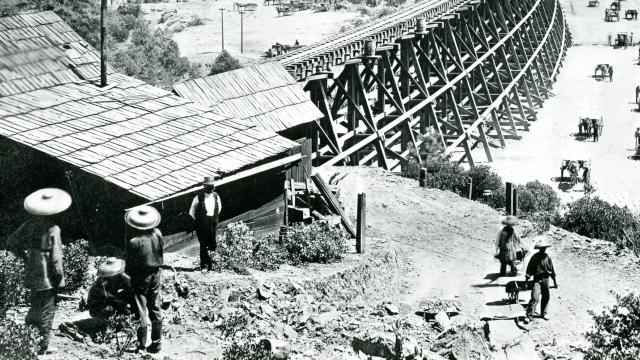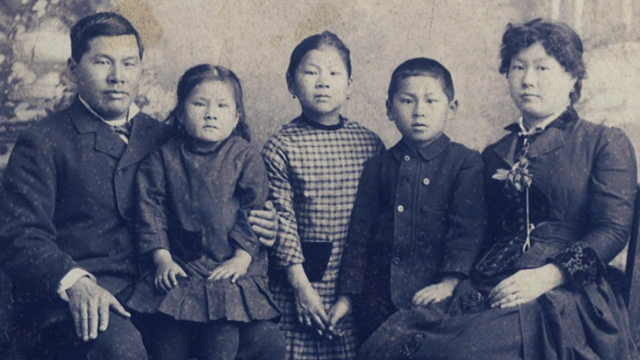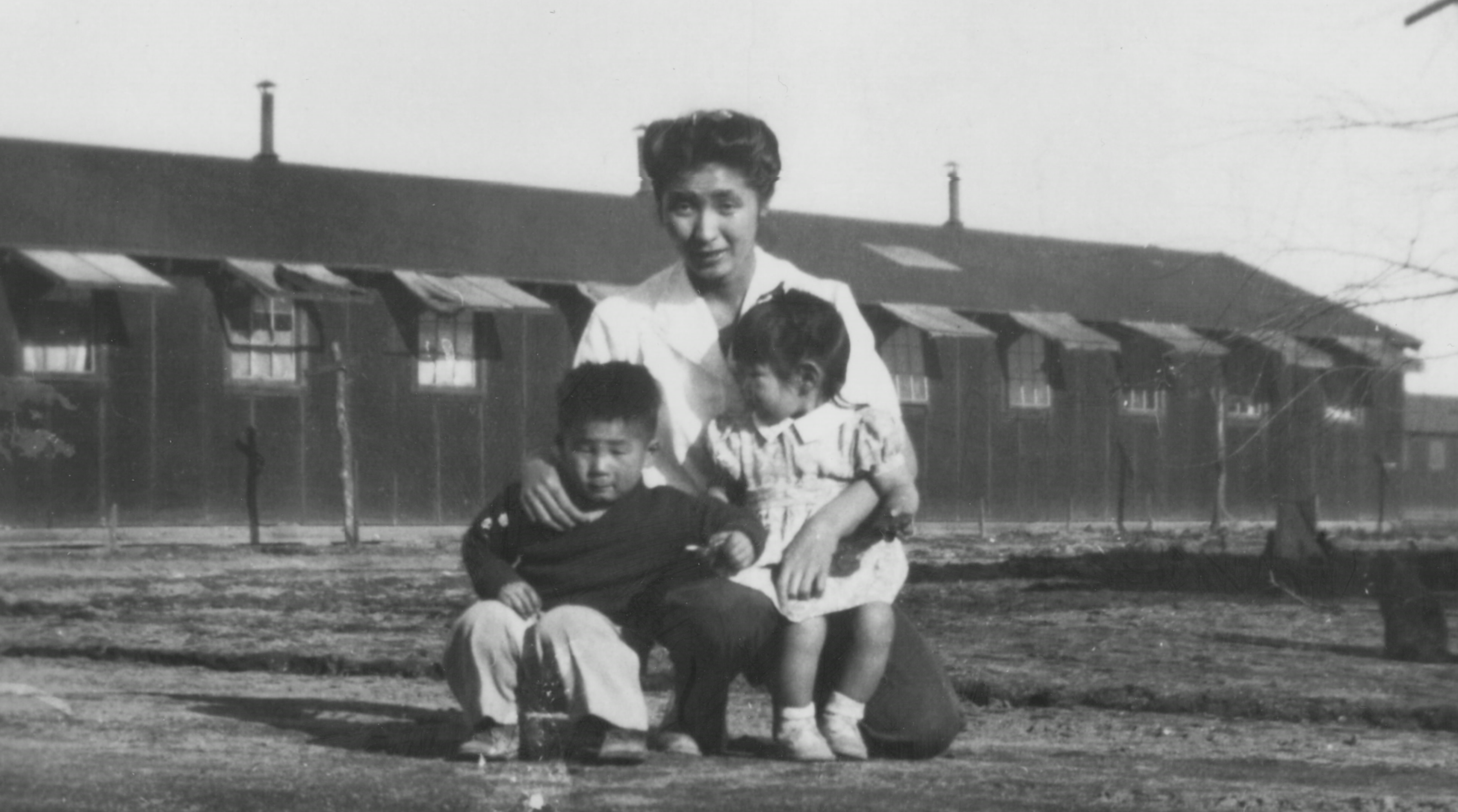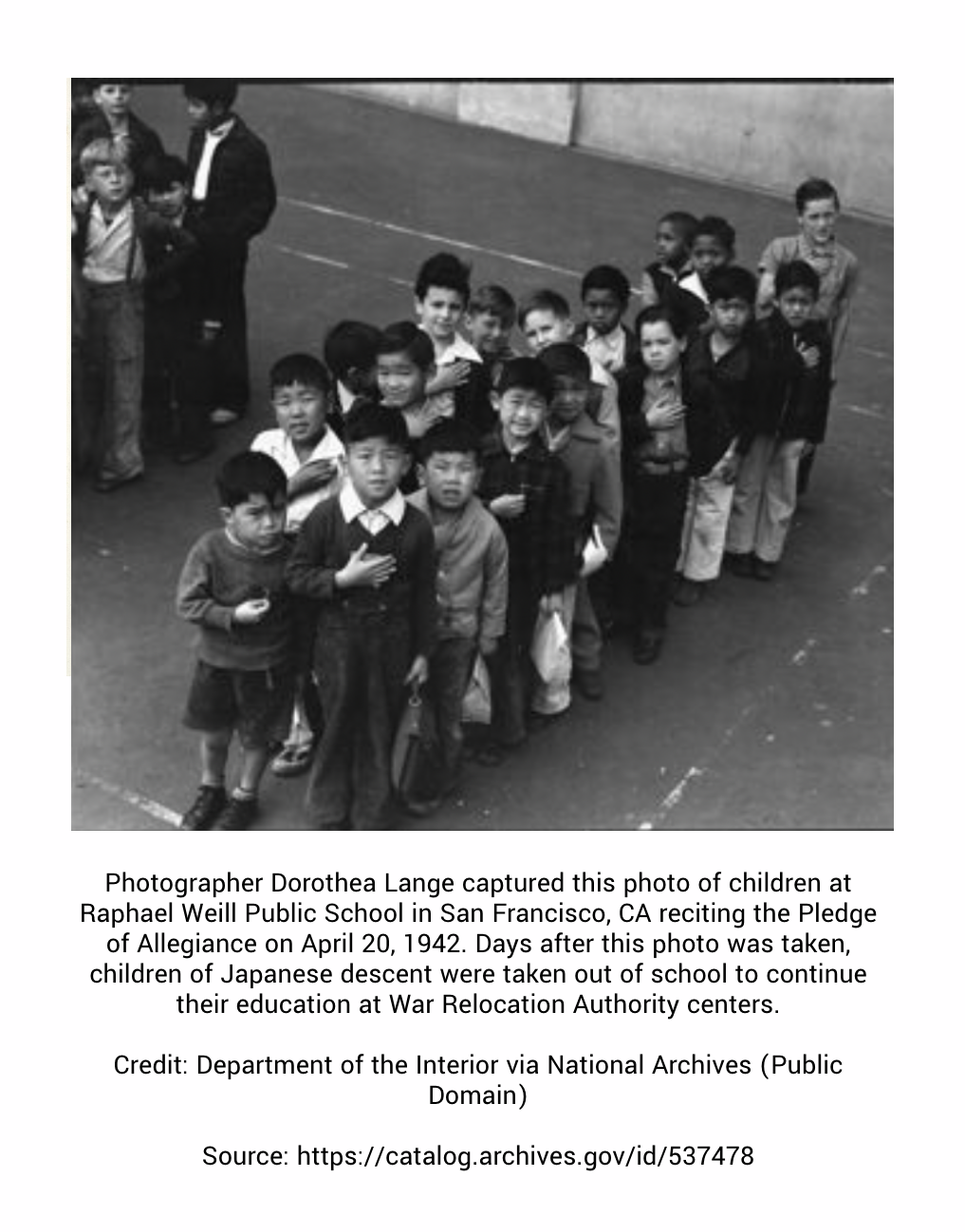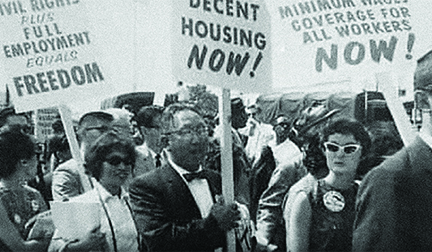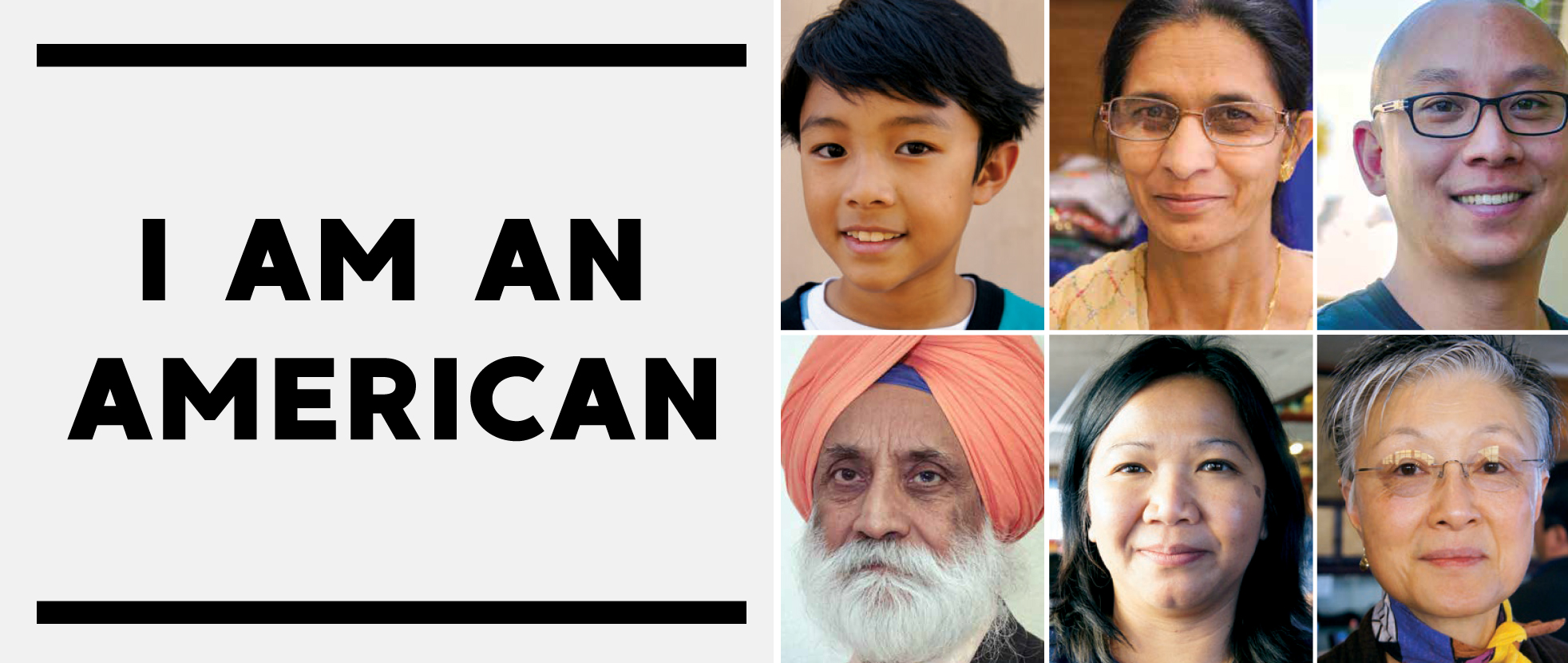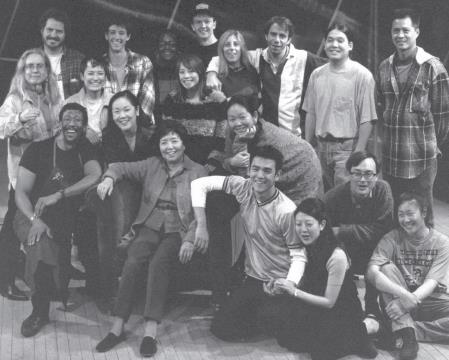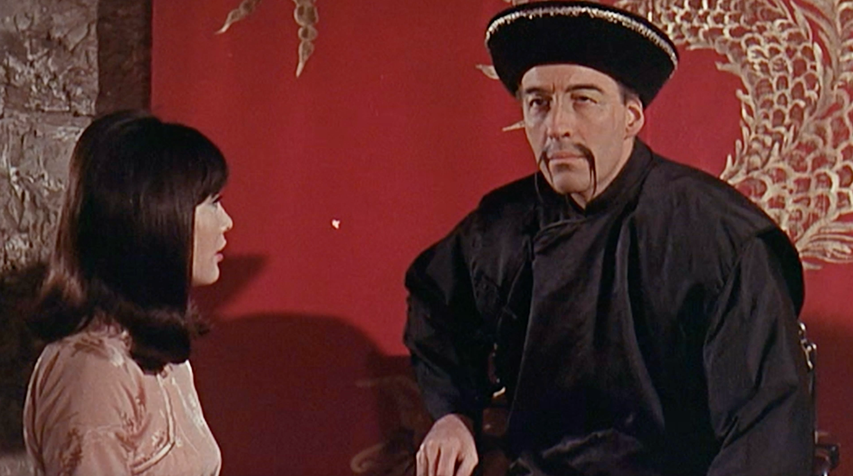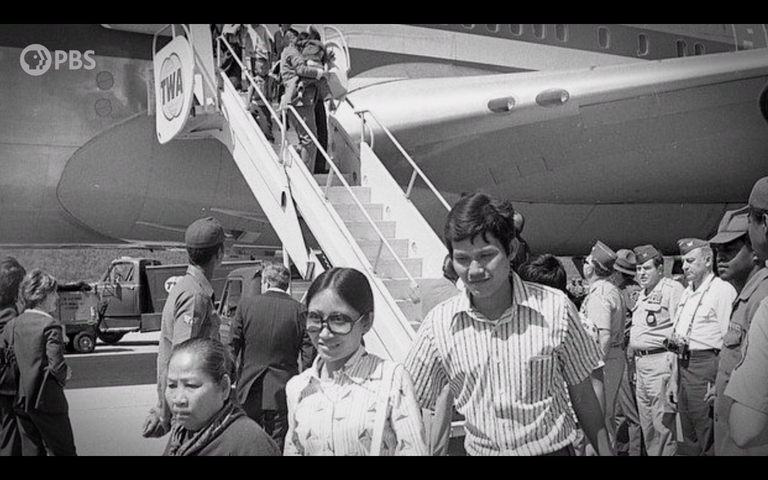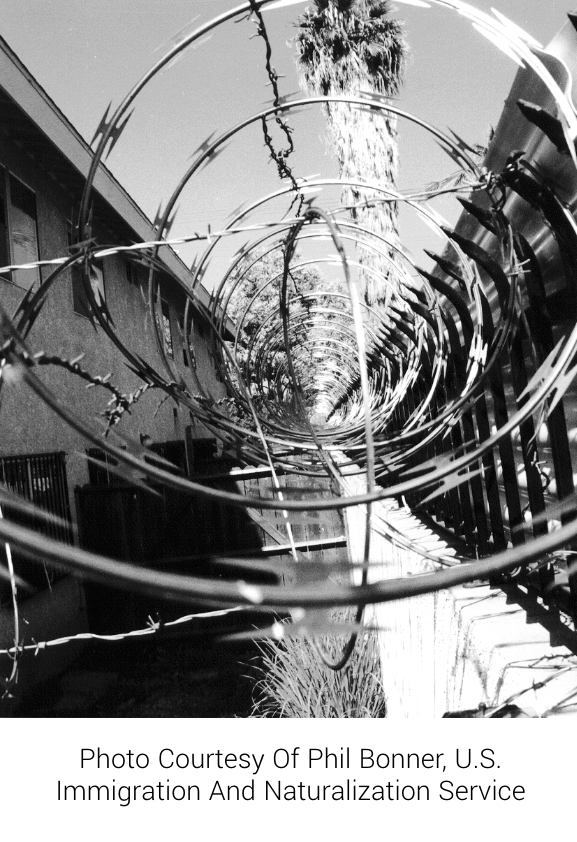Grades
Subjects
Time Periods
Topics
Grades
Subjects
Time Periods
Topics
Breaking Ground
Prior to 1930
Prior to 1930
In the era of U.S. expansion, new immigrants arrive from China, India, Japan, the Philippines, and beyond. Eventually barred by anti-Asian laws, they become America's first "undocumented immigrants". Undeterred, they continue to build railroads, take their fight for equality to the US Supreme Court, and even dazzle on the silver screen.
GRADES: 5-12
SUBJECT: ENGLISH, SOCIAL STUDIES, U.S. HISTORY, WORLD HISTORY
With dreams of having a better life, thousands of Chinese risked their lives across the Pacific Ocean to join in the construction of the Transcontinental Railroad from 1863 to 1869. These Chinese laborers worked under extreme and hazardous environments. Due to their ethnic appearance and language barriers, the Chinese were greatly taken advantage of by their employers. These Chinese laborers became pioneers in the collective labor actions of American labor history, while also contributing to the economies of the U.S. and China.
GRADES: 7-12
SUBJECT: ENGLISH, U.S. HISTORY, WORLD HISTORY
This lesson covers the story of the Tape family, Chinese immigrants and their U.S.-born children residing in San Francisco, California. Joseph and Mary Tape attempted to enroll their daughter, Mamie, at Spring Valley Primary, an all-white school, and were denied based on their race. Students learn about Joseph and Mary Tape’s fight for school desegregation in the California Supreme Court case, Tape v. Hurley (1885), and the greater connections their story lent to anti-Asian sentiment in the United States at that time. Students also explore themes of exclusion and identity in educational and political institutions for Asian Americans. In addition, students analyze Asian American activism and their attempts towards building an Asian American identity through the legal system.
GRADES: 7-10
SUBJECT: U.S. HISTORY, SOCIAL STUDIES
In 1884, Joseph and Mary Tape sued the San Francisco School District for the right to public education, arguing that their daughter Mamie Tape deserved the right to attend public school. The California Supreme Court ruled that the Fourteenth Amendment protected the rights of citizens and thus, Mamie, a U.S. citizen, could not be denied the opportunity to attend school. However, the Court ruled that segregated schools were not against the law, which led the San Francisco Board of Education to build separate schools for Chinese students. In this lesson, students will examine how the California Supreme Court Case of Tape v. Hurley (1885) reinforced the Perpetual Foreigner Stereotype. They will analyze a primary source document to understand how this landmark civil rights case set the foundation for ending school segregation.
A Question of Loyalty
1920s to 1940s
1920s to 1940s
An American-born generation straddles their country of birth and their familial homelands in Asia. Family loyalties are tested during World War II when Japanese Americans are imprisoned in incarceration camps and brothers find themselves on opposite sides of the battle lines. For Koreans and other Asian Americans, joining the U.S. war effort also meant the fight for independence in Asia.
GRADES: 7-12
SUBJECT: ENGLISH, U.S. HISTORY
The video clip covers personal narratives from victims and descendants and highlights how the American government forced Japanese Americans and the Aleuts of Alaska into incarceration camps under President Roosevelt’s Executive Order 9066. The lesson covers the forced removal process, conditions and lives in the camps, and the eventual release of prisoners. The lesson analyzes the incarceration of Japanese Americans and Aleuts as a violation of their constitutional rights. Students discuss examples of incarceration and connect instances of incarceration with current social and political events pertaining to the concept of “families belong together.”
GRADES: 0-6
SUBJECT: ENGLISH, U.S. HISTORY
Japanese Americans suffered terrible injustices as a result of governmental policies that discriminated against them by treating them like enemies. In this lesson, students examine what happened to Japanese Americans during WWII, what constitutional rights were violated in the process, and why such a massive injustice happened.
GRADES: 7-10
SUBJECT: U.S. HISTORY, SOCIAL STUDIES
On February 19, 1942, President Franklin D. Roosevelt issued Executive Order No. 9066, forcing over 120,000 Japanese Americans into incarceration camps, where they faced mistreatment and had their loyalty to the United States questioned. In response to this injustice and violation of their constitutional rights, Japanese Americans resisted and sought reparations and apologies from the U.S. government. In this lesson, students will use a media literacy analysis to examine how the constitutional rights of Japanese Americans, including those who were U.S. citizens, were violated during World War II.
Good Americans
1950s to 1960s
1950s to 1960s
During the years of the Cold War, Asian Americans are simultaneously heralded as the "model minority" while also suspected as the perpetual foreigner. As Asian Americans aspire to run for national political office for the first time, an emerging culture-quake rises to the surface as they are fueled with bold ambition and hope.
GRADES: 6-12
SUBJECT: ENGLISH, U.S. HISTORY
Perpetual foreigner stereotyping is a form of systemic racism used against Asian Americans. They have historically been stereotyped as foreigners in the United States no matter their duration of time living here or whether they were American-born. The perpetual foreigner stereotype is maintained by institutions such as Hollywood, private and public sectors, to elected public officials. Throughout U.S. history, Asian Americans have been scapegoated as the cause of the country’s various problems and catastrophes including economic despair, wars, terrorsm, and coronavirus pandemic.
GRADES: 0-13
SUBJECT: ENGLISH
Beulah Kwoh (stage name, Beulah Quo), was a pacesetting Chinese American actress as one of the most visible Asian American women in Hollywood from the 1950s to 1990s. She broke ground in movies, televisions and plays from Hollywood to China. Her commitment to providing a showcase for Asian Americans in the theatre was shown by her co-founding the East West Players, the largest and oldest Asian American theatre in the U.S.
Beulah appeared in close to 100 movies, television shows, and plays. Despite her personal success, she also called for greater opportunities for others: for the inclusion of diverse actors who reflected real society. She utilized her career to raise consciousness of, and to lend her voice against the stereotyping of Asian Americans and other minorities in the entertainment industry.
Beulah appeared in close to 100 movies, television shows, and plays. Despite her personal success, she also called for greater opportunities for others: for the inclusion of diverse actors who reflected real society. She utilized her career to raise consciousness of, and to lend her voice against the stereotyping of Asian Americans and other minorities in the entertainment industry.
GRADES: 6-12
SUBJECT: ENGLISH, U.S. HISTORY
Stereotyping is a form of systemic racism for Asian Americans who have historically been stereotyped in the United States through “Yellow Peril,” fearmongering, economic, and societal threats. Viewed as perpetual foreigners, no matter their duration living here or whether they were American-born, Asian males are often characterized as scheming, weak, ignorant, and undesirable, while Asian females are exotic, cunning, and subservient. This perpetual foreigner stereotype is maintained by institutions from Hollywood, private and public sectors to elected public servants. Asian Americans have been fighting against stereotypes since the 1920s, and continue to do so, on- and off-screen.
Generation Rising
1960s to 1970s
1960s to 1970s
During a time of the war and social tumult, a young generation fights for equality both in the fields and on campuses to claim a culture and new identity of their own: Asian Americans. The aftermath of the Vietnam War introduces new immigrants and refugees who further expand the definition of who is Asian American.
GRADES: 6-12
SUBJECT: ENGLISH, U.S. HISTORY
During the 1970s, arts and culture became vehicles for elevating the narratives of Asian Americans, a term first used in 1968 during the struggle to establish ethnic studies at San Francisco State University. Under this new pan-Asian identity, a generation of young Asian American organizers, academics, and artists emerged ready to define themselves and their history to the rest of America. Musicians, artists, writers, and filmmakers helped increase the visibility of Asian American identities and cultures across various media. Activities include group discussions, analysis of the lyrics to “We Are the Children,” research, and creation of their original work that represents students’ culture, identity, family, or generation.
GRADES: 7-12
SUBJECT: ENGLISH, U.S. HISTORY
With the United States and the Soviet Union in a Cold War, fears of Southeast Asia falling to communism led to the United States’ increasing involvement with political and military matters in Vietnam, which was split between the communist North and anti-communist South in 1954. This lesson addresses the U.S. government’s economic and tactical support of the Vietnam conflict, and atrocities committed by U.S. troops against Vietnamese civilians. Domestically, an anti-war movement in the United States began to grow, with people questioning the United States’ involvement overseas—the money spent and the lives lost—which later impacted the war itself, including the withdrawal of troops and policies to prevent future U.S. military action without congressional approval. Activities include group discussions, analysis of Dr. Martin Luther King, Jr.’s speech, “Beyond Vietnam: A Time to Break Silence,” and research.
GRADES: 6-12
SUBJECT: ENGLISH, U.S. HISTORY
On April 30, 1975, the Fall of Saigon marked the end of the Vietnam War, with the communist North taking over the anti-communist South, and unifying the country into the Socialist Republic of Vietnam. The end of the war resulted in a large-scale migration of nearly 130,000 refugees fleeing communist rule and retaliation in the Indochina region to the United States. Over the next twenty years, a total of three million people would flee Vietnam, Cambodia, and Laos. Activities include group discussions, an examination of differences between the “dominant narrative” and the “counter narrative,” and research.
Breaking Through
1980s to 2019
1980s to 2019
At the turn of the millennium, Asian Americans have become the fastest-growing population in the U.S. During this time of tremendous change, Asian Americans, newly empowered by their growing numbers and rising influence, must navigate their role in the future of America as the country tackles urgent debates over immigration, race, and the economic disparity.
GRADES: 7-12
SUBJECT: ENGLISH, U.S. HISTORY
Asian Americans contributed greatly to the Silicon Valley high tech boom beginning in the 1980s to present day. The technological innovations that came out of Silicon Valley enabled the United States to become a global IT leader as the region in San Francisco Bay Area became the birthplace for many high tech companies, such as the search company Yahoo! While some high-profile Asian American entrepreneurs were able to build highly lucrative companies, the contributions of Asian immigrants who performed the piecework labor that made these new innovative machines function was also an important factor to Silicon Valley’s growth and success. Activities include group discussions and research.
GRADES: 0-13
SUBJECT: ENGLISH
Eighty Thai women and men were enslaved for years in a former apartment building in El Monte, California. Even after the discovery of the slave complex in 1995, they and their supporters had to fight for their freedom, immigration status and damages from those responsible for their plight and exploitation in this horrific garment sweatshop. The bravery of the workers and creative legal and legislative advocacy led to a major victory for the workers and new laws to protect workers against sweatshops.
GRADES: 6-12
SUBJECT: ASIAN AMERICAN AND PACIFIC ISLANDER STUDIES, ENGLISH
Eighty Thai women and men were enslaved for years in a former apartment building in El Monte, California. Even after the discovery of the complex in 1995, they and their supporters had to fight for their freedom, immigration status, and damages from those responsible for their plight and exploitation in this horrific garment sweatshop. The bravery of the workers and creative legal and legislative advocacy led to a major victory for the workers and new laws to protect workers against sweatshops.
